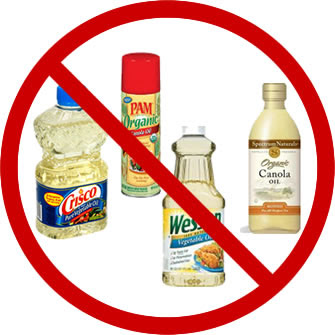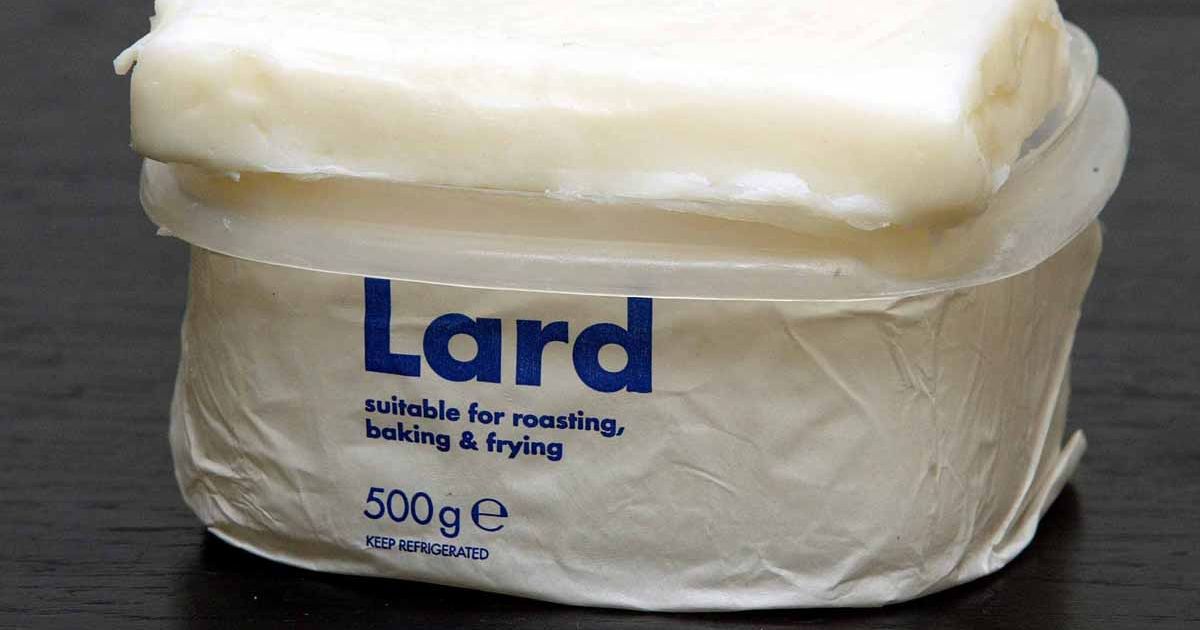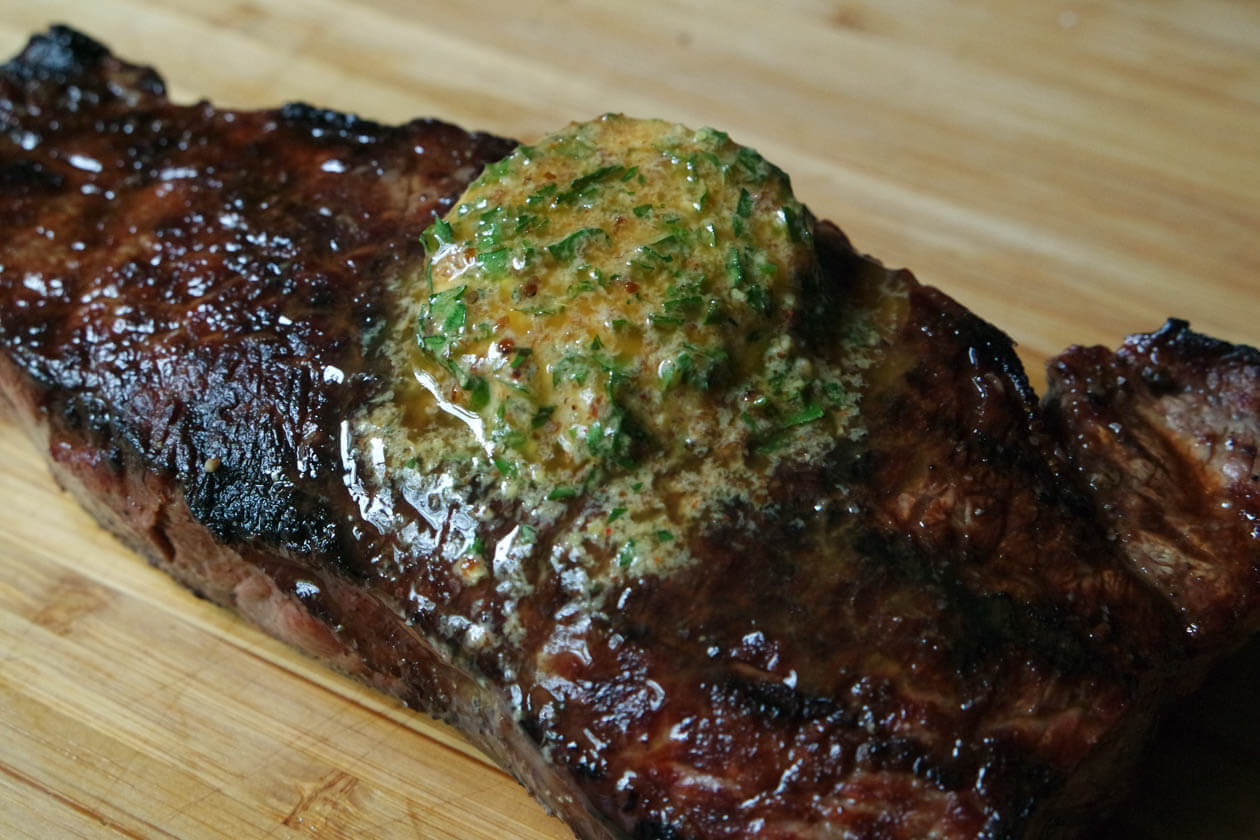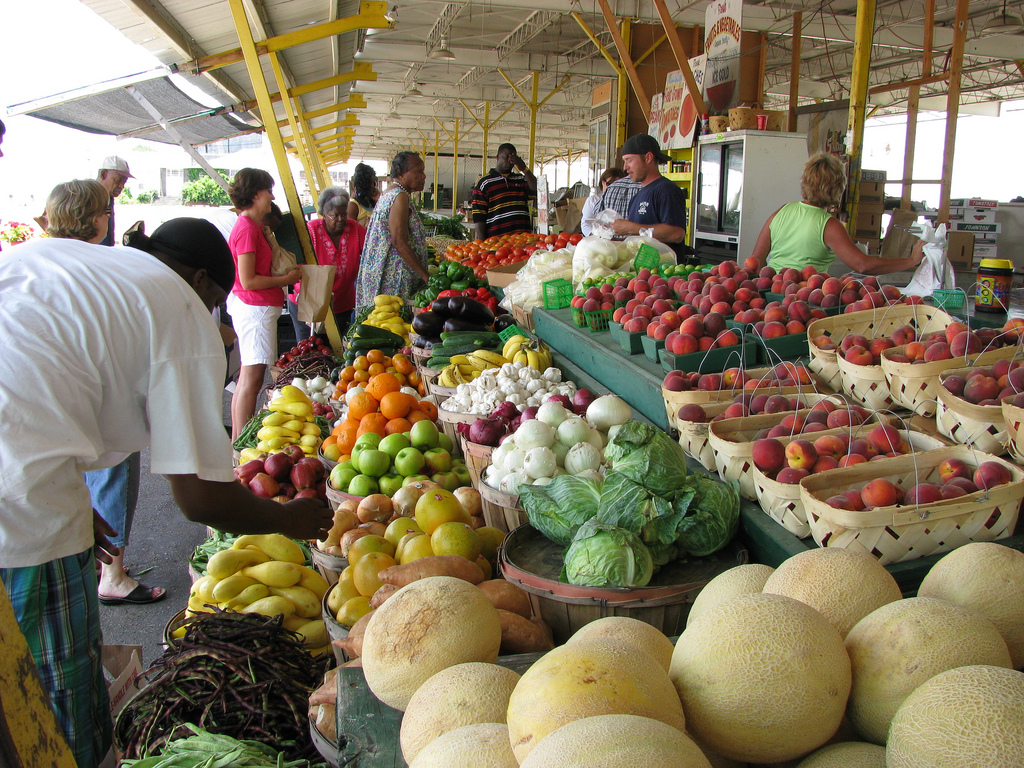One of the earlier elements that drew me to “the magical microbiome” was that both of my sons have food allergies, which I never had to endure, but which puts them squarely in the mainstream for the past 15 years or so (one has an all-too-common peanut and tree-nut allergy; both are allergic to mollusks). Both, by the way, were born by c-section, so they “missed out” on the transfer of natural microbiota that occurs with natural birth (I shared a link about that in last week’s post.) I also have inflammatory arthritis – an autoimmune disorder – so that threw a little lighter fluid on the charcoal, too.
As for our own ability to control, or at least influence, our microbiomes, diet is a key factor (see Sections 4 – 10 in the linked article). To be fair, so are other facets of lifestyle, such as smoking and exercise, but since I post about food’s impact on health, I’m going to stay focused there. While there is still a need for much further study, so far it is clear that diet has a significant effect, and specific nutrients and compounds have greater and lesser impacts, promoting or suppressing either the levels or functions of certain organisms. There are also suggestions (same article linked above) that a greater variety of beneficial microbiota is linked with improved immune function and overall health.
I promised last week that I’d share some more practical information about things that can promote a healthier microbiome. First, it’s important, in order to get everyone on the same page, that I define a couple of key terms.
Probiotics vs. Prebiotics
I think it’s a fairly safe bet that you’ve heard the term “probiotic;” and I’d wager 50/50 odds that, with the increase in awareness of the importance of “gut health” as many call it, you may have heard the term “prebiotic” as well. But do you really know what they are, what the difference is, and why each one is important?
First, their definitions, according to the International Scientific Association for Probiotics and Prebiotics (ISAPP):
A “prebiotic” is a substrate that is selectively utilized by host microorganisms conferring a health benefit; and,
A “probiotic” is live microorganisms that, when administered in adequate amounts, confer a health benefit on the host.
So, prebiotics are, essentially, foods that our bodies can’t necessarily fully break down on their own, but which feed beneficial microorganisms (I’ll share some examples of these in a minute) and thus promote their presence and function, while probiotics are the beneficial organisms themselves. Each is important, and neither stands effectively on its own.
Prebiotics. . . Yummm . . .
You probably think I’m kidding with that heading, but I’m not. Many foods containing key prebiotic compounds fall on my list of “things I love to eat,” and maybe they’re on yours, too. This, by the way, is not an exhaustive list by any means, but it will get you started!
Chicory root is the runaway winner for food with the highest concentration of prebiotic compounds content by weight (in this case, the compound is called inulin), at 64.6%. It gets processed into prebiotic supplements and fiber supplements all over the place, but given how I feel about supplements, I’m not inclined to go there. It’s barely a food, but I’m including it anyway. The most common way to consume it is roasted, ground, and made into a beverage. It can be a coffee substitute, or added in equal parts to coffee when brewing (New Orleans-style); however, the volume consumed in that manner is relatively low, so realistically, though its prebiotic concentration is high, the amounts one would be likely to consume on a daily basis probably bring it about level with the rest of the foods on this list. Acacia powder has a higher concentration of prebiotic compounds, but it’s not an actual food, so it’s off my list.
Other prebiotic-containing foods include Jerusalem artichoke, a.k.a. sunchoke; dandelion greens; garlic; leek; onion (I can barely cook anything that doesn’t have at least one, if not all 3 of these members of the allium family at its base); asparagus; wheat bran; wheat flour; banana; cocoa (unsweetened!!); cruciferous veggies (broccoli; cauliflower; kale; brussels sprouts); legumes; unrefined barley; oats; apples; flax seed; jicama root; seaweed. If you have no idea what some of these things are or how to eat them, don’t worry – I was in the same boat with a few of them too, and below I’ll tell you where you can learn more about them, including sources for a whole bunch of recipes.
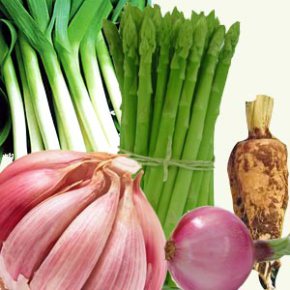
Beware the Probiotic Craze
No matter what, it just seems that we’re doomed in this culture (sorry – no pun intended, but now that it’s on the page, I’m going with it) to seeking a magic bullet for everything, and we are obsessed with breaking everything down into components to try to figure out that one mystical thing that’s creating a benefit; for example, the compound resveratrol in red wine. Remember when everyone went nuts over that for a while? God knows how many $ millions were, and still may be, being made off resveratrol supplements, and just about every other discovery of the latest “miracle compound.” Unfortunately, it has never been, and never will be that simple, and it will always be the case that our bodies are much better at synthesizing all the beneficial elements (vitamins, minerals, fats, proteins, etc.) of *real food* rather than processed supplements.
Therefore, we shouldn’t all go crazy running to the supplements aisle for the latest probiotic concoction, expecting some kind of health miracle, most especially if we aren’t making other lifestyle & diet changes to support it. Nor should we fall into the marketing trap of spending a ton on specially engineered probiotic foods. Humans have been making things like sauerkraut, kimchi, and yogurt for thousands of years. Over-engineering and over-marketing them doesn’t make them any better. It just makes them more expensive.
. . . But They *Can* Still be Helpful
As I mentioned briefly in my post last week, however, there are some cases where studies have shown that probiotics do confer meaningful benefits, and more studies are underway for various others. So far, probiotic supplements have been shown to have benefits:
- When taken to offset the side effects of antibiotic treatment;
- In preterm infants, to prevent the development of necrotizing enterocolitis, which is otherwise not well-understood, but is often fatal;
- To help relieve the symptoms of Irritable Bowel Syndrome (IBS).
In addition, there’s enough anecdotal evidence for benefits from regular consumption of probiotic foods (mostly fermented foods) that further studies continue, and in the meantime, consuming them isn’t harmful, provided the benefits aren’t offset through the addition of sweeteners and other unnecessary additives.
Some Probiotic Goodies
Some examples of fermented foods & beverages (I’ve already mentioned a few above): yogurt (be sure it has live, active cultures and best to go with plain. Add your own fruit, and, if you must, sweetener, but really, try to wean yourself off that stuff. Cut it out for a couple of weeks and before you know it, you’ll wonder how it ever owned you like it did); sauerkraut; miso; kimchi; kombucha; fresh, sour pickles and other pickled vegetables; tempeh (as long as you don’t cook it too long/at temps that are too high and kill the active cultures); natto (made from fermented soybeans – I’ve never tried it); kefir; traditional buttermilk (not cultured).
It’s easy to add these things into your diet. For things like kimchi and sauerkraut, go easy at first if you aren’t used to them – maybe just a tablespoon or 2 along with a meal to add a little zing. My experience is that it can take a couple of weeks for your body to acclimate to what, in some cases, may be new strains of beneficial microbes. . .

Getting Practical
One of the first books I read on this subject was The Microbiome Diet by Raphael Kellman, M.D. As I mentioned last week, weight loss was not my quest. Self-education, and just maybe, a practical solution for some of the health challenges I and my family were experiencing, was the goal. I’ve included the link to the book on Amazon here because I still think it’s a great primer on the microbiome: what it is, why it’s important, and how to keep it “healthy.” That was where I first learned about prebiotic foods, and as the title of the book promises, a guided approach to incorporating them, and a microbiome-supporting diet, into your life, including recipes galore.
You can choose to follow the stepped diet in his book if you really want to go hardcore, but you can, I believe, still derive a lot of benefit even if you don’t pull out all the stops. He also markets a line of probiotic supplements; he tells you himself in the book that you don’t need them, but claims that you get a bigger bang for your dietary buck if you do. I’m skeptical of anything that requires me to spend exorbitant amounts of money on supplements, but since he doesn’t require it, he gets a pass.
Other Resources
A quick google search for “prebiotic recipes” or “probiotic eating” should yield a pretty sizable collection of sources to review for recipes and eating ideas. Here are a few good ones: MakeSauerkraut!; Paleo Hacks Gut Health Recipes; Clean Eating.
Anything you do to incorporate more of the foods that support the microbiome is likely to be helpful, as long as you aren’t drowning out the benefits with processed garbage and too much sweet stuff. It works for me. Just ask my arthritic elbow.
Happy Food Friday!



